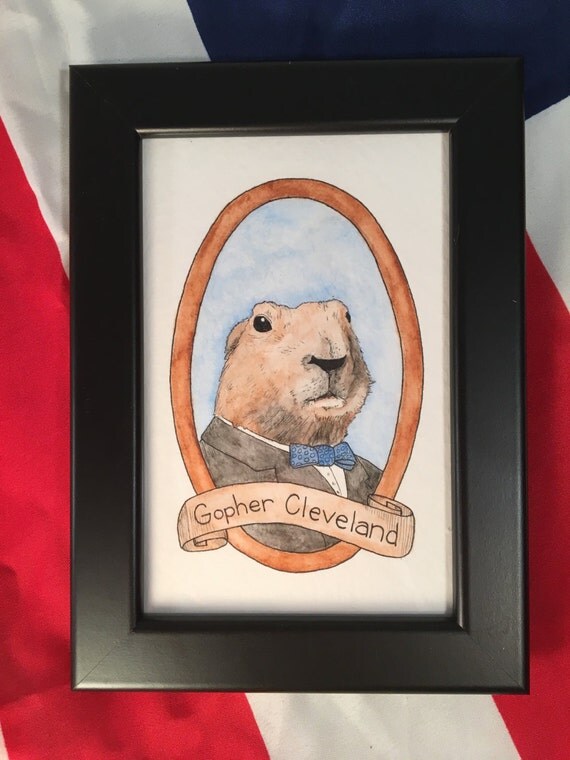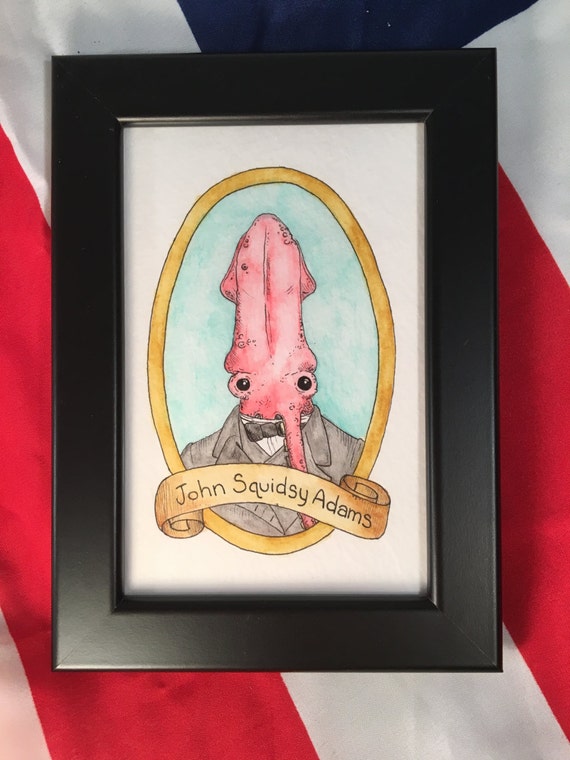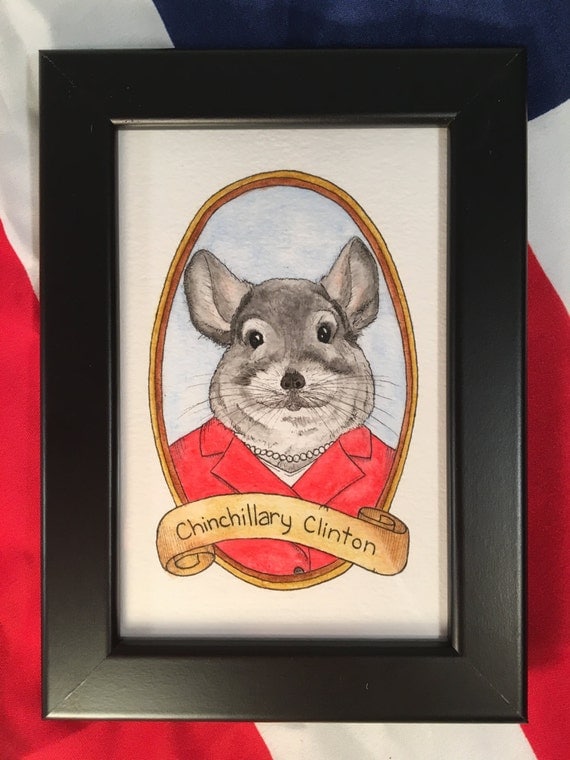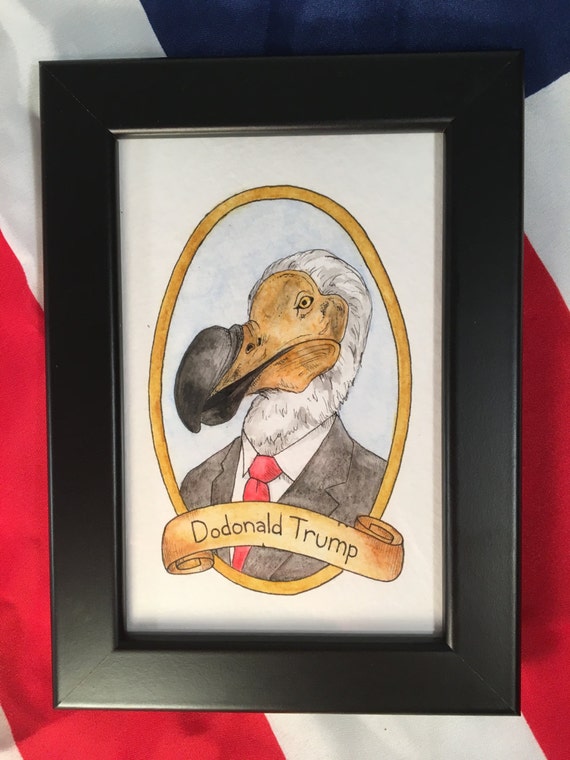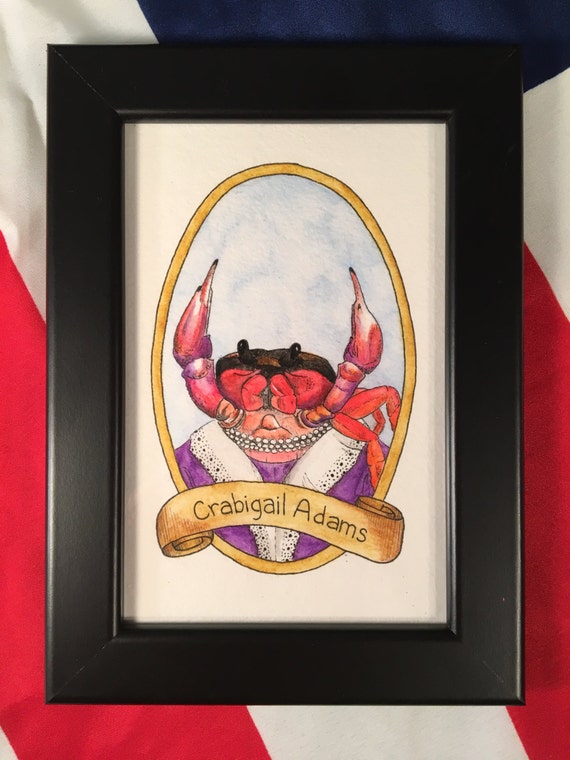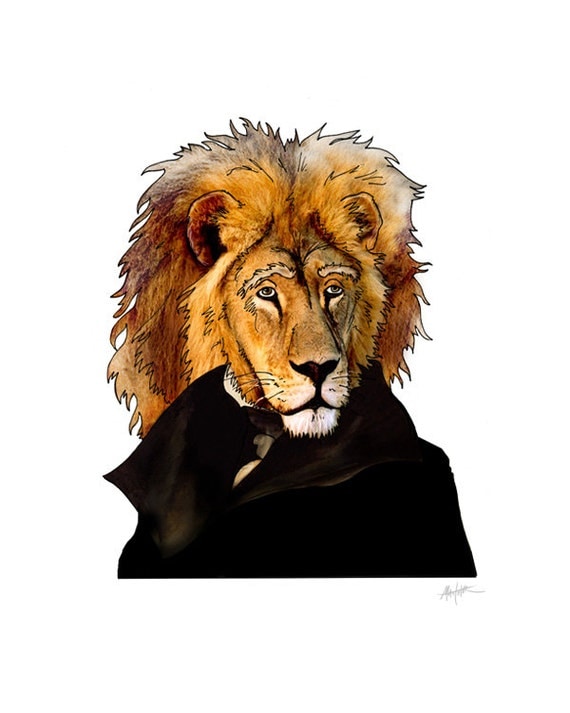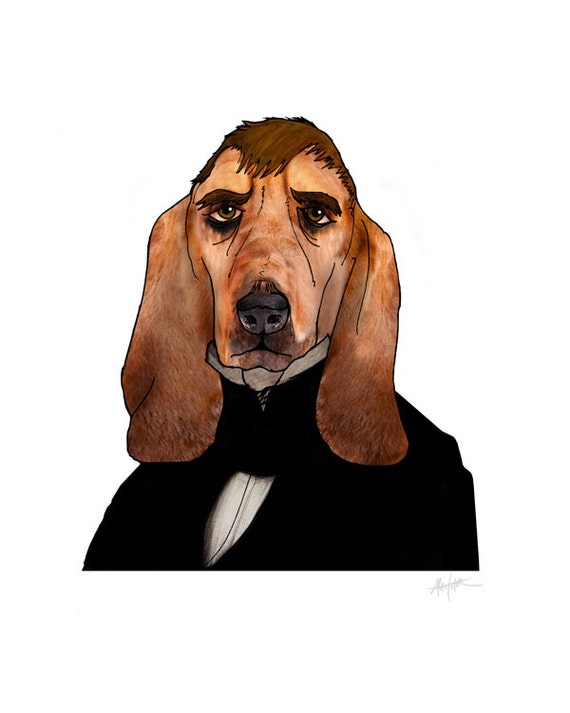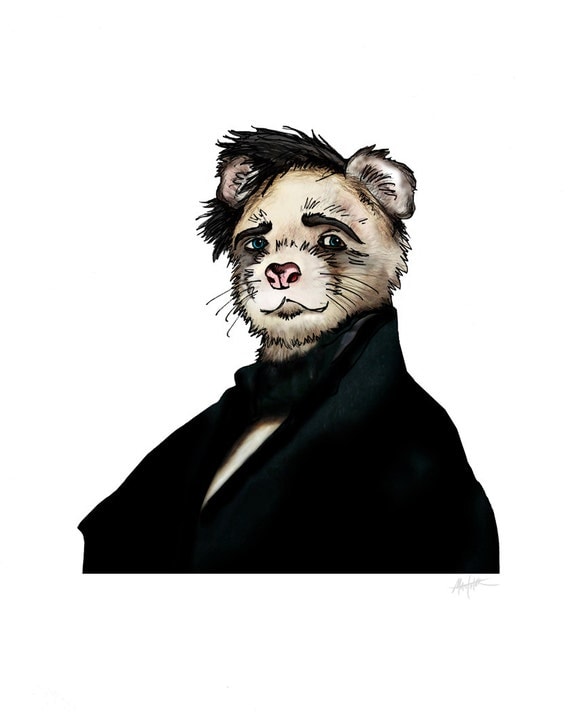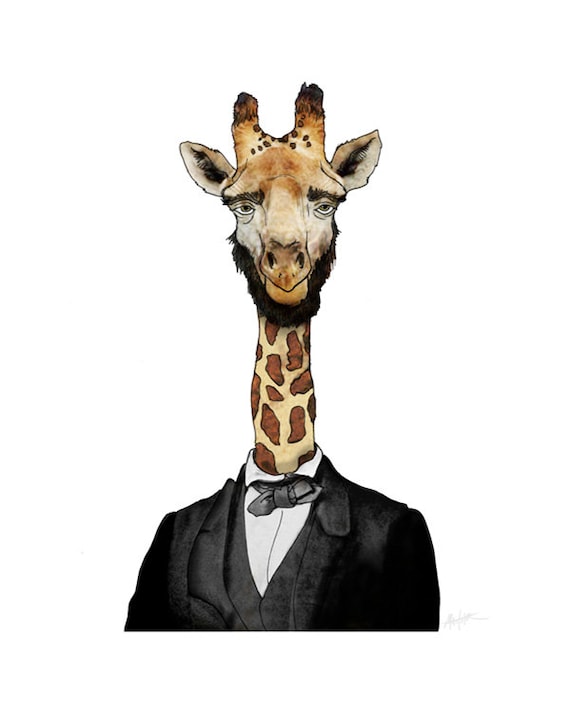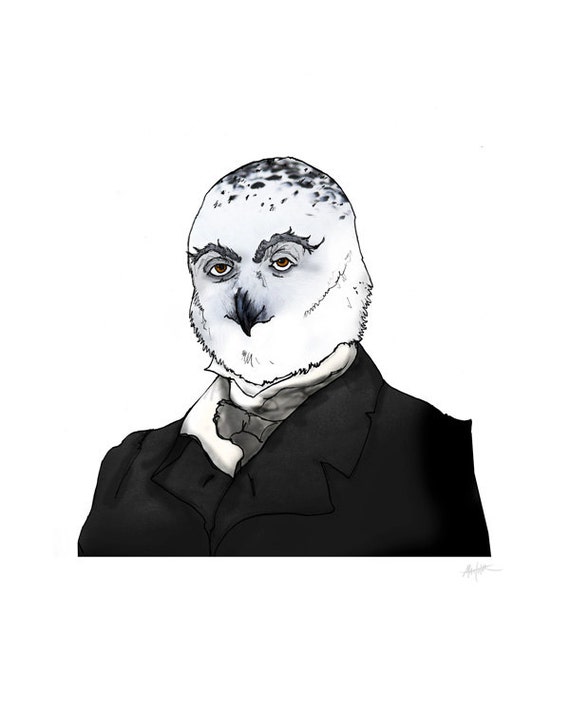If you're anything like me, you're just a wee bit obsessed with Hamilton. I don't blame you.
Back in November my mom and I went to see Hamilton in Chicago, and this past weekend I went to see it again, this time with my oldest son and with my BFF Becky and her husband Sean, who flew in from Baltimore for the day. You might remember Becky from such blog posts as Our Whirlwind Hamilton Tour of New York and The Millard Fillmore Presidential Library.
I wrote a post about my first viewing of Hamilton here. This time, most of the cast members were the same, and my impressions of them were pretty much the same, too, so I won't rehash. There were two changes, though: This time Angelica was played by understudy Aubin Wise instead of Karen Olivo. Becky was bummed because she'd really wanted to see Karen Olivo in the role, but I thought Aubin Wise held her own and did an excellent job.
The other major change was that Wayne Brady played Aaron Burr. I'd known this in advance because it was kind of big news when his casting was announced. I've always liked Brady on Whose Line is it Anyway? and, frankly, I think he's hilarious. I'd never seen him in anything more serious, though, and I wondered how he'd do in a role like Burr.
In five words: Wayne Brady Stole the Show. From the moment he opened his mouth, he was phenomenal.
In a way, he was almost too good. I don't want to say Wayne Brady's Burr overshadowed Miguel Cervantes' Hamilton, but...he did. More than ever before, I wanted to say, "It's okay, Aaron Burr! I forgive you! Forget about Alexander Hamilton. Please, just sing some more!" That's not necessarily a bad thing, but it was surprising and left me feeling a bit uneasy...though in a good way.
If you haven't seen Hamilton yet and have a chance to catch it in Chicago while Brady is performing (through April 9), do it! Easier said than done, I know, but it's well worth a try.
Tuesday, February 28, 2017
Tuesday, February 14, 2017
Presidential Penis Nicknames
I need to start by apologizing in advance. To all of our dead presidents, to my friends, to my family, to you, to humanity: I am deeply sorry.
I've been thinking about this post on Presidential Penis Nicknames for longer than I care to admit. In many ways, the idea for this post is what spurred the creation of this blog in the first place. You see, a couple years ago a friend of mine sent me a message on Facebook asking if Warren G. Harding had sex with his dog.
Ordinarily I'd be shocked by such a suggestion, but I knew the basis of the question. Jon Stewart had recently done a segment involving Harding, and he very matter-of-factly implied that Harding used to have sex with Laddie Boy. I want to say that Stewart was clearly kidding, but apparently this one seemed, somehow, almost plausible?
Nonetheless, I assured my friend that although Harding and Laddie Boy were very close, they did not (to the best of my knowledge) have sex with each other. I did take the opportunity to tell her that Harding had nicknamed his penis "Jerry" because I never pass up opportunities to mention that. She asked if I knew the nicknames of other presidents' penises, and that led to a flurry of speculation and also to the realization that I needed a blog.
So here we are.
As it turns out, we do know the nicknames for two presidents' penises: Harding's and Lyndon Johnson's, referred to as "Jumbo" of course. The rest are shrouded in secrecy, as they should be. But that doesn't mean I can't take a guess. It turns out that the presidents' own nicknames often make great penis-names. Sometimes campaign slogans or important events during their administrations work. You get the idea.
So...I made a list. Note that I have not included any living presidents because: 1) It feels wrong (not that Clinton's hasn't gotten plenty of press), and 2) I didn't want to think about Donald Trump's penis. Most of these should be relatively self-explanatory, or at least easily searchable, but in a few instances I've included links. Some presidents' willies get two nicknames because how can one choose between "Old Public Functionary" and "Ten-Cent Jimmy" for James Buchanan's bits? And just to be clear, one of William McKinley's nicknames really was Wobbly Willie.
There you have it. I almost hate to ask, but feel free to submit your own nicknames and maybe I'll consider them for an addendum or something.
I've been thinking about this post on Presidential Penis Nicknames for longer than I care to admit. In many ways, the idea for this post is what spurred the creation of this blog in the first place. You see, a couple years ago a friend of mine sent me a message on Facebook asking if Warren G. Harding had sex with his dog.
Ordinarily I'd be shocked by such a suggestion, but I knew the basis of the question. Jon Stewart had recently done a segment involving Harding, and he very matter-of-factly implied that Harding used to have sex with Laddie Boy. I want to say that Stewart was clearly kidding, but apparently this one seemed, somehow, almost plausible?
Nonetheless, I assured my friend that although Harding and Laddie Boy were very close, they did not (to the best of my knowledge) have sex with each other. I did take the opportunity to tell her that Harding had nicknamed his penis "Jerry" because I never pass up opportunities to mention that. She asked if I knew the nicknames of other presidents' penises, and that led to a flurry of speculation and also to the realization that I needed a blog.
So here we are.
As it turns out, we do know the nicknames for two presidents' penises: Harding's and Lyndon Johnson's, referred to as "Jumbo" of course. The rest are shrouded in secrecy, as they should be. But that doesn't mean I can't take a guess. It turns out that the presidents' own nicknames often make great penis-names. Sometimes campaign slogans or important events during their administrations work. You get the idea.
So...I made a list. Note that I have not included any living presidents because: 1) It feels wrong (not that Clinton's hasn't gotten plenty of press), and 2) I didn't want to think about Donald Trump's penis. Most of these should be relatively self-explanatory, or at least easily searchable, but in a few instances I've included links. Some presidents' willies get two nicknames because how can one choose between "Old Public Functionary" and "Ten-Cent Jimmy" for James Buchanan's bits? And just to be clear, one of William McKinley's nicknames really was Wobbly Willie.
| George Washington | Vernon (give it a minute) |
| John Adams | Colossus of Independence His Rotundity |
| Thomas Jefferson | Long Tom |
| James Madison | His Little Majesty |
| James Monroe | Jeremiah Jingle Bolloc Cocked Hat |
| John Quincy Adams | Publicola |
| Andrew Jackson | Old Hickory |
| Martin Van Buren | The Little Magician Talleyrand |
| William Henry Harrison | Hard Cider |
| John Tyler | His Accidency |
| James K. Polk | Young Hickory |
| Zachary Taylor | Old Rough and Ready |
| Millard Fillmore | Teacher’s Pet |
| Franklin Pierce | Handsome Frank |
| James Buchanan | Old Public Functionary Ten-Cent Jimmy |
| Abraham Lincoln | The Rail Splitter |
| Andrew Johnson | The Grim Presence |
| Ulysses S. Grant | Unconditional Surrender |
| Rutherford B. Hayes | Samuel Tilden |
| James Garfield | Roscoe Conkling |
| Chester A. Arthur | Prince Arthur |
| Grover Cleveland | Big Steve |
| Benjamin Harrison | Little Ben |
| William McKinley | Wobbly Willie |
| Theodore Roosevelt | The Big Stick The Trust-Buster |
| William Howard Taft | Big Bill |
| Woodrow Wilson | The Schoolmaster |
| Warren G. Harding | Jerry* Laddie Boy |
| Calvin Coolidge | Even Silenter Cal |
| Herbert Hoover | The Chief |
| Franklin Roosevelt | Arsenal of Democracy |
| Harry Truman | The Bomb The Hell-Giver |
| Dwight D. Eisenhower | Operation Overlord Sputnik |
| John F. Kennedy | Jack |
| Lyndon Johnson | Jumbo* El BJ |
| Richard Nixon | Tricky Dick |
| Gerald Ford | Warren G. Harding |
| Ronald Reagan | The Gipper |
There you have it. I almost hate to ask, but feel free to submit your own nicknames and maybe I'll consider them for an addendum or something.
Sunday, February 12, 2017
Lincoln's Gingerbread Men
During one of the Lincoln-Douglas debates, Abraham Lincoln told a story about gingerbread men. When he was a child, his mother made some gingerbread men and gave three of them to Abe. He took them outside, where he ran into a neighbor boy. Being a generous person, Abe gave the boy one of the cookies. The boy shoved it in his mouth and immediately asked for another. Lincoln handed another cookie over to the boy, who said something about how no one ever loved gingerbread so much and got so little of it.
I first heard that story when I was a kid, when my dad read it to me from the classic children's book Abraham Lincoln by Ingri and Edgar Parin d'Aulaire. Ever since then, I've associated gingerbread men with Abraham Lincoln. (I mean, I don't solely associate them with him, but when I think of gingerbread men outside the context of Christmas, it's usually because of him).
So I decided that for Lincoln's birthday this year, I would make some gingerbread men--but not just any gingerbread men. These guys were going to be authentic.
See, whenever I'd envisioned this story, I imagined regular ol' gingerbread men, like the Christmas kind, but possibly without decorations. It wasn't until I read the book Abraham Lincoln in the Kitchen by Rae Katherine Eighmey that I realized Lincoln's childhood cookies were far different from the ones we think of today.
Ingredients, kitchen utensils, and "appliances" would have made it unlikely that Nancy Lincoln's cookies would resemble the flat, uniform cut-outs we think of today. She wouldn't have had an oven and cookie sheets; her baking would have been done in a Dutch oven over a fire. She likely didn't have something as superfluous as a man-shaped cookie cutter. She wouldn't have had baking soda.
So Eighmey, a cook and historian, used clues and research to create a recipe she thinks better resembles the cookies Lincoln would have had (although she does substitute baking soda for the pearl ash the Lincolns would have used, and adjusted the amount of ginger based on modern availability and storage methods).
When Lincoln recounted the story, he said that his mother used sorghum in the cookies. Eighmey thought this was unusual since most gingerbread recipes of the era called for molasses (as they do today). Eighmey's recipe calls for sorghum syrup or molasses, and although I really wanted to try it with the sorghum syrup, I was unable to locate any locally. So I used molasses.
Anyway, once the dough is made, you roll out snakes of it and form people like you might with Play-Doh. In a way this was preferable to the usual rolling-and-cutting method because I hate rolling dough flat. Also, my kids could easily help me without any fights over the cookie cutter.
Here is Eighmey's recipe:
Gingerbread Men
1/2 c milk
 1/2 c sorghum syrup or light or dark molasses
1/2 c sorghum syrup or light or dark molasses
3 1/3 c unbleached all-purpose flour
2 tbsp packed brown sugar
1/2 tsp baking soda
1 tbsp ground ginger
1/2 c (1 stick) cold salted butter
I'm going to paraphrase the instructions.
Pour the milk and syrup/molasses into a measuring cup and mix together.
Mix the dry ingredients in a bowl, then add the butter (in small pieces) and cut it into the flour mixture with forks or a pastry cutter. Then add the liquid and mix with a spoon or fork. I wound up stirring, then kneading it.
Take a golf-ball-sized piece of dough and work it into a long thin "snake," the circumference of a pencil and about a foot long. Break off a 4" piece and set it aside. Take the remaining piece and fold it in half, giving it a twist about an inch down. That forms the head and legs (sort of like a corn-husk doll, if you've ever made one of those). Then take the 4" strip and place it behind the "neck" to make arms. Pinch it down a little to secure it.
Bake at 325 for about 15 minutes. (I considered trying these in my Dutch oven but thought better of it.)
The recipe says it will make about 18 men, but we wound up with 24, probably because my 5-year-old, 8-year-old, and I aren't very good at measuring.
Are these the most gorgeous cookies you've ever seen? No. Are they the least? Quite possibly. I'm sure Mrs. Lincoln was far better at this. (Also, I'm not going to lie: There were several poop jokes made during the rolling-out process. Understandably.)
I worried that the cookie dough, being warm from all the handling, would spread into a giant mess in the oven, but they held their shapes beautifully and puffed more than they spread.
The final result was crispy on the outside, soft on the inside. They're not very sweet and not very gingery, but they're actually pretty good--almost refreshing. These won't replace my normal Christmastime gingerbread cookies, but I'd definitely make them again for Presidents Day or something.
Be sure to check out my other presidential gingerbread recipes: Dolley Madison's and Washington/Lafayette's. If you make any of them, let me know what you think.
I first heard that story when I was a kid, when my dad read it to me from the classic children's book Abraham Lincoln by Ingri and Edgar Parin d'Aulaire. Ever since then, I've associated gingerbread men with Abraham Lincoln. (I mean, I don't solely associate them with him, but when I think of gingerbread men outside the context of Christmas, it's usually because of him).
So I decided that for Lincoln's birthday this year, I would make some gingerbread men--but not just any gingerbread men. These guys were going to be authentic.
See, whenever I'd envisioned this story, I imagined regular ol' gingerbread men, like the Christmas kind, but possibly without decorations. It wasn't until I read the book Abraham Lincoln in the Kitchen by Rae Katherine Eighmey that I realized Lincoln's childhood cookies were far different from the ones we think of today.
Ingredients, kitchen utensils, and "appliances" would have made it unlikely that Nancy Lincoln's cookies would resemble the flat, uniform cut-outs we think of today. She wouldn't have had an oven and cookie sheets; her baking would have been done in a Dutch oven over a fire. She likely didn't have something as superfluous as a man-shaped cookie cutter. She wouldn't have had baking soda.
So Eighmey, a cook and historian, used clues and research to create a recipe she thinks better resembles the cookies Lincoln would have had (although she does substitute baking soda for the pearl ash the Lincolns would have used, and adjusted the amount of ginger based on modern availability and storage methods).
When Lincoln recounted the story, he said that his mother used sorghum in the cookies. Eighmey thought this was unusual since most gingerbread recipes of the era called for molasses (as they do today). Eighmey's recipe calls for sorghum syrup or molasses, and although I really wanted to try it with the sorghum syrup, I was unable to locate any locally. So I used molasses.
Anyway, once the dough is made, you roll out snakes of it and form people like you might with Play-Doh. In a way this was preferable to the usual rolling-and-cutting method because I hate rolling dough flat. Also, my kids could easily help me without any fights over the cookie cutter.
Here is Eighmey's recipe:
Gingerbread Men
1/2 c milk
 1/2 c sorghum syrup or light or dark molasses
1/2 c sorghum syrup or light or dark molasses3 1/3 c unbleached all-purpose flour
2 tbsp packed brown sugar
1/2 tsp baking soda
1 tbsp ground ginger
1/2 c (1 stick) cold salted butter
I'm going to paraphrase the instructions.
Pour the milk and syrup/molasses into a measuring cup and mix together.
Mix the dry ingredients in a bowl, then add the butter (in small pieces) and cut it into the flour mixture with forks or a pastry cutter. Then add the liquid and mix with a spoon or fork. I wound up stirring, then kneading it.
Take a golf-ball-sized piece of dough and work it into a long thin "snake," the circumference of a pencil and about a foot long. Break off a 4" piece and set it aside. Take the remaining piece and fold it in half, giving it a twist about an inch down. That forms the head and legs (sort of like a corn-husk doll, if you've ever made one of those). Then take the 4" strip and place it behind the "neck" to make arms. Pinch it down a little to secure it.
Bake at 325 for about 15 minutes. (I considered trying these in my Dutch oven but thought better of it.)
The recipe says it will make about 18 men, but we wound up with 24, probably because my 5-year-old, 8-year-old, and I aren't very good at measuring.
Are these the most gorgeous cookies you've ever seen? No. Are they the least? Quite possibly. I'm sure Mrs. Lincoln was far better at this. (Also, I'm not going to lie: There were several poop jokes made during the rolling-out process. Understandably.)
I worried that the cookie dough, being warm from all the handling, would spread into a giant mess in the oven, but they held their shapes beautifully and puffed more than they spread.
The final result was crispy on the outside, soft on the inside. They're not very sweet and not very gingery, but they're actually pretty good--almost refreshing. These won't replace my normal Christmastime gingerbread cookies, but I'd definitely make them again for Presidents Day or something.
Be sure to check out my other presidential gingerbread recipes: Dolley Madison's and Washington/Lafayette's. If you make any of them, let me know what you think.
Friday, February 10, 2017
Herbert Hoover's Letters to Kids
A couple months ago I was listening to the Herbert Hoover episode of the DC Improv's "Headliner of State" podcast, a search for the funniest president of all time. The guest on that particular episode was Tom Schwartz, director of the Herbert Hoover Library and Museum.
Through most of the interview, Hoover came off seeming like a good humored person, but not necessarily a humorous person. Toward the end of the interview, though, there emerged a glimmer of Hoover's funnier side.
Almost as an afterthought Schwartz mentioned this book of correspondence with children that Hoover had published after he retired. One of the letters asked if he thought a woman would ever be president. Hoover responded, "As a generalization, the men have not done too good a job of government in the world in the last forty-seven years, and the chances for the women are thereby increased."
In another letter a child asked if Hoover had traveled much as president. He answered,
That's good stuff! That's funny!
I decided I needed a copy of this book, Herbert Hoover: On Growing Up.
As it happened, I had already been planning a trip to the Hoover Museum in West Branch, Iowa, because I needed to pick up the Hoover-themed 2016 White House Christmas Ornament, and why order it online when I can drive three hours to get it in person? I added the book to my shopping list.
A week or so later, my 5-year-old and I made the trip out to West Branch. Once we were done with the exhibits we headed to the gift shop where I eagerly perused the various books about Hoover, but I didn't see On Growing Up. I asked the woman working there if they have it, and not only did she say no, she seemed baffled that I'd even ask.
Maybe that's because when I looked it up on Amazon later that afternoon, I learned that On Growing Up was last printed in 1962. Luckily, though, I was able to snag a used copy in excellent condition for about $7 shipped.
When the book finally arrived, I was a bit underwhelmed. It's not a long book--around 150 pages, with a short letter or two on each page. However, it did serve as an interesting glimpse into Hoover's mind.
Most of these letters were sent and received well after Hoover had been president, so we're not talking about the Depression-era Hoover; we're talking about the Cold War-era Hoover. The letters serve as an excellent snapshot of America in the 1950s, especially with a chid's letter that actually uses both the words "golly" and "gee." Hoover talks a lot about Communism (specifically about avoiding it), but he also gets in some digs that show he was clearly still stinging from the way he was treated in re: the Depression.
It's not all politics, though. In fact, most of it isn't politics. One definitely gets the sense that Hoover felt wistful for his boyhood days, and stresses to children that they should focus more on having fun and getting a good education than on the problems of the world. While he sometimes comes across as "elder statesman imparting wisdom for the ages," he mostly comes across as "old guy next door who likes fishing." It's like this book could be titled Chicken Soup for the Cold War Child's Soul.
Although Hoover didn't have an easy childhood (he was orphaned at a young age and was sent to live with relatives on the other side of the country), he speaks with fondness about his early days in Iowa: sledding, doing chores on the farm, etc. We also learn some interesting random facts, like how his childhood idol was Abraham Lincoln.
In order to maintain the innocence of childhood, Hoover is vehemently opposed to children learning "Social Studies," although he does believe in the value of geography and learning about other presidents. In many letters, children ask about some pressing world issue, and Hoover basically tells them to go play baseball and leave the problems to adults. In some instances, though, he gives rather detailed answers.
An eighth-grader named Mary Lou asked for Hoover's opinions on military censorship, federal aid to education, and socialized medicine. Hoover responded that some amount of military censorship is necessary for national security; that the federal government should build schools in poor areas but should not pay teachers' salaries because once they get involved financially, eventually the federal government will tell local schools what to teach; and that socialism is bad and leads to dictatorships and a loss of freedom. Some debates never change.
Also, for a guy who thinks kids shouldn't worry about grown-up problems, he nonetheless (inadvertently, I'm sure) plants seeds of concerns, like with the kid who said, "Today the big problem is the Atom and Space." Hoover replied, "I do not agree that the whole problem today concerns the atom bomb and space. Those are only parts of a larger problem--the determination of the Communists to rule the world." I'm sure Linda slept a lot better after that.
As it turns out, the two examples cited in the podcast were probably the funniest responses Hoover gave, but there were some other decent ones. In one response, he talks about the time a professional autograph-hunter asked him for three autographs. When Hoover inquired why, he was told, "It takes two of yours to get one of Babe Ruth."
There's also the 1919 response in which he lists the family pets, including two dogs, 11 goldfish, three frogs, and "1,000,000 mosquitoes."
A girl named Kathleen writes that although most children want to be president, she wants to be a doctor. Hoover responds, "I am glad you want to be a doctor and not President. We do not have enough doctors, and there seems to be a sufficient number of candidates for President."
The funniest part of the book might have come from one of the children writing to Hoover. A boy named Michael addressed his letter to the "Walled Off Hotel." (Hoover spent his last years living at the Waldorf Astoria in New York.)
On Growing Up offers a unique and approachable look at Hoover's life in general, but it also gives a taste of a changing America. It's definitely worth a read for anyone interested in mid-20th-century politics and culture.
Through most of the interview, Hoover came off seeming like a good humored person, but not necessarily a humorous person. Toward the end of the interview, though, there emerged a glimmer of Hoover's funnier side.
Almost as an afterthought Schwartz mentioned this book of correspondence with children that Hoover had published after he retired. One of the letters asked if he thought a woman would ever be president. Hoover responded, "As a generalization, the men have not done too good a job of government in the world in the last forty-seven years, and the chances for the women are thereby increased."
In another letter a child asked if Hoover had traveled much as president. He answered,
Presidents must travel in order to learn what the people have in mind and to explain their policies.
However, travel has improved for Presidents. George Washington required five or six days to go with horses from New York to Washington. Presidents today can do it now in one hour by jet. But jets go over the heads of people--like some of the speeches.
That's good stuff! That's funny!
I decided I needed a copy of this book, Herbert Hoover: On Growing Up.
As it happened, I had already been planning a trip to the Hoover Museum in West Branch, Iowa, because I needed to pick up the Hoover-themed 2016 White House Christmas Ornament, and why order it online when I can drive three hours to get it in person? I added the book to my shopping list.
A week or so later, my 5-year-old and I made the trip out to West Branch. Once we were done with the exhibits we headed to the gift shop where I eagerly perused the various books about Hoover, but I didn't see On Growing Up. I asked the woman working there if they have it, and not only did she say no, she seemed baffled that I'd even ask.
Maybe that's because when I looked it up on Amazon later that afternoon, I learned that On Growing Up was last printed in 1962. Luckily, though, I was able to snag a used copy in excellent condition for about $7 shipped.
When the book finally arrived, I was a bit underwhelmed. It's not a long book--around 150 pages, with a short letter or two on each page. However, it did serve as an interesting glimpse into Hoover's mind.
Most of these letters were sent and received well after Hoover had been president, so we're not talking about the Depression-era Hoover; we're talking about the Cold War-era Hoover. The letters serve as an excellent snapshot of America in the 1950s, especially with a chid's letter that actually uses both the words "golly" and "gee." Hoover talks a lot about Communism (specifically about avoiding it), but he also gets in some digs that show he was clearly still stinging from the way he was treated in re: the Depression.
It's not all politics, though. In fact, most of it isn't politics. One definitely gets the sense that Hoover felt wistful for his boyhood days, and stresses to children that they should focus more on having fun and getting a good education than on the problems of the world. While he sometimes comes across as "elder statesman imparting wisdom for the ages," he mostly comes across as "old guy next door who likes fishing." It's like this book could be titled Chicken Soup for the Cold War Child's Soul.
Although Hoover didn't have an easy childhood (he was orphaned at a young age and was sent to live with relatives on the other side of the country), he speaks with fondness about his early days in Iowa: sledding, doing chores on the farm, etc. We also learn some interesting random facts, like how his childhood idol was Abraham Lincoln.
In order to maintain the innocence of childhood, Hoover is vehemently opposed to children learning "Social Studies," although he does believe in the value of geography and learning about other presidents. In many letters, children ask about some pressing world issue, and Hoover basically tells them to go play baseball and leave the problems to adults. In some instances, though, he gives rather detailed answers.
An eighth-grader named Mary Lou asked for Hoover's opinions on military censorship, federal aid to education, and socialized medicine. Hoover responded that some amount of military censorship is necessary for national security; that the federal government should build schools in poor areas but should not pay teachers' salaries because once they get involved financially, eventually the federal government will tell local schools what to teach; and that socialism is bad and leads to dictatorships and a loss of freedom. Some debates never change.
Also, for a guy who thinks kids shouldn't worry about grown-up problems, he nonetheless (inadvertently, I'm sure) plants seeds of concerns, like with the kid who said, "Today the big problem is the Atom and Space." Hoover replied, "I do not agree that the whole problem today concerns the atom bomb and space. Those are only parts of a larger problem--the determination of the Communists to rule the world." I'm sure Linda slept a lot better after that.
As it turns out, the two examples cited in the podcast were probably the funniest responses Hoover gave, but there were some other decent ones. In one response, he talks about the time a professional autograph-hunter asked him for three autographs. When Hoover inquired why, he was told, "It takes two of yours to get one of Babe Ruth."
There's also the 1919 response in which he lists the family pets, including two dogs, 11 goldfish, three frogs, and "1,000,000 mosquitoes."
A girl named Kathleen writes that although most children want to be president, she wants to be a doctor. Hoover responds, "I am glad you want to be a doctor and not President. We do not have enough doctors, and there seems to be a sufficient number of candidates for President."
The funniest part of the book might have come from one of the children writing to Hoover. A boy named Michael addressed his letter to the "Walled Off Hotel." (Hoover spent his last years living at the Waldorf Astoria in New York.)
On Growing Up offers a unique and approachable look at Hoover's life in general, but it also gives a taste of a changing America. It's definitely worth a read for anyone interested in mid-20th-century politics and culture.
Wednesday, February 1, 2017
More Humorous Presidential Artwork
By now it should be obvious that apparently I'm a sucker for artwork of president-animal mashups, whether the animals are living cephalopods on (vice) presidents' heads or dead pigs in presidents' arms.
While browsing Etsy recently, I found two more artists combining presidents and animals.
The first has a shop called PreZOOdents. These pieces mainly play off puns made with the presidents' names, like Benjamin Bearison or James Toucanon. That's amusing, and the pictures are cute, but they don't really look like the people they represent. I had just about decided these pictures weren't for me and was about to give up, but then I found...
Gopher Cleveland.
And I laughed.
Then I noticed John Squidsy Adams and laughed again, especially because at first glance I didn't realize it was a squid.
(Also, just now I accidentally typed "gland" instead of "glance," which I'm sure was not a Freudian slip in any way.)
I admit I was also tickled by Chinchillary Clinton and Dodonald Trump. (Figuratively tickled, not literally. Ew.)
I also appreciate that the artist has included some Founding Fathers and Mothers, like Crabigail Adams.
I would definitely consider buying some of those for myself and my weird friends.
The second artist I found has a shop called Pet Presidents. Instead of playing off presidents' names, this artist seems to focus more on physical features...and it works in an almost creepy (but good-creepy) way.
Check out Andrew Jackson as a lion.
I mean, it looks like him, right? (It's also likely a play on Andrew Jackson as the "American Lion")
And William Henry Harrison as a bloodhound.
And Franklin Pierce as a freaking ferret!
It almost makes me wonder why I'd never thought of him that way before.
Lincoln as a giraffe?
Totally works. The eyes!
I will say that I mistook the John Quincy Adams owl for James Buchanan, because that looks exactly like James Buchanan.
So who's buying one for above their couch?
I haven't received any products from these artists, nor have I even been in touch with them (yet), so the only benefit I get from sharing these is the sense of contentment knowing that I've enriched your lives just a little bit.
If you know of any artists doing cool stuff with presidents (with or without animals), let me know.
While browsing Etsy recently, I found two more artists combining presidents and animals.
The first has a shop called PreZOOdents. These pieces mainly play off puns made with the presidents' names, like Benjamin Bearison or James Toucanon. That's amusing, and the pictures are cute, but they don't really look like the people they represent. I had just about decided these pictures weren't for me and was about to give up, but then I found...
Gopher Cleveland.
And I laughed.
Then I noticed John Squidsy Adams and laughed again, especially because at first glance I didn't realize it was a squid.
(Also, just now I accidentally typed "gland" instead of "glance," which I'm sure was not a Freudian slip in any way.)
I admit I was also tickled by Chinchillary Clinton and Dodonald Trump. (Figuratively tickled, not literally. Ew.)
I also appreciate that the artist has included some Founding Fathers and Mothers, like Crabigail Adams.
I would definitely consider buying some of those for myself and my weird friends.
The second artist I found has a shop called Pet Presidents. Instead of playing off presidents' names, this artist seems to focus more on physical features...and it works in an almost creepy (but good-creepy) way.
Check out Andrew Jackson as a lion.
And William Henry Harrison as a bloodhound.
And Franklin Pierce as a freaking ferret!
It almost makes me wonder why I'd never thought of him that way before.
Lincoln as a giraffe?
Totally works. The eyes!
I will say that I mistook the John Quincy Adams owl for James Buchanan, because that looks exactly like James Buchanan.
So who's buying one for above their couch?
I haven't received any products from these artists, nor have I even been in touch with them (yet), so the only benefit I get from sharing these is the sense of contentment knowing that I've enriched your lives just a little bit.
If you know of any artists doing cool stuff with presidents (with or without animals), let me know.








